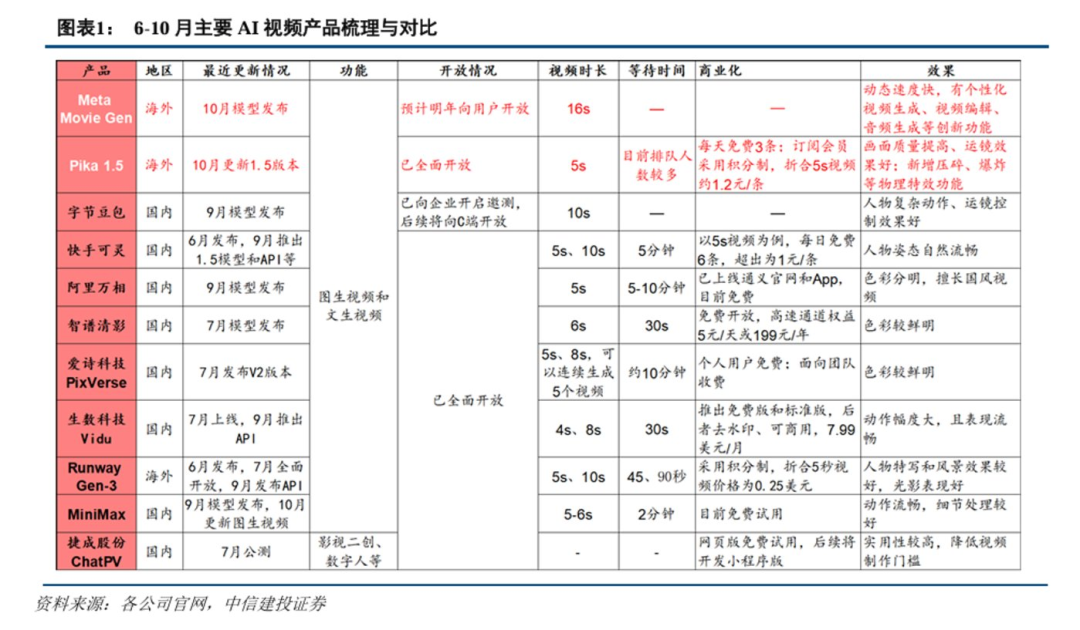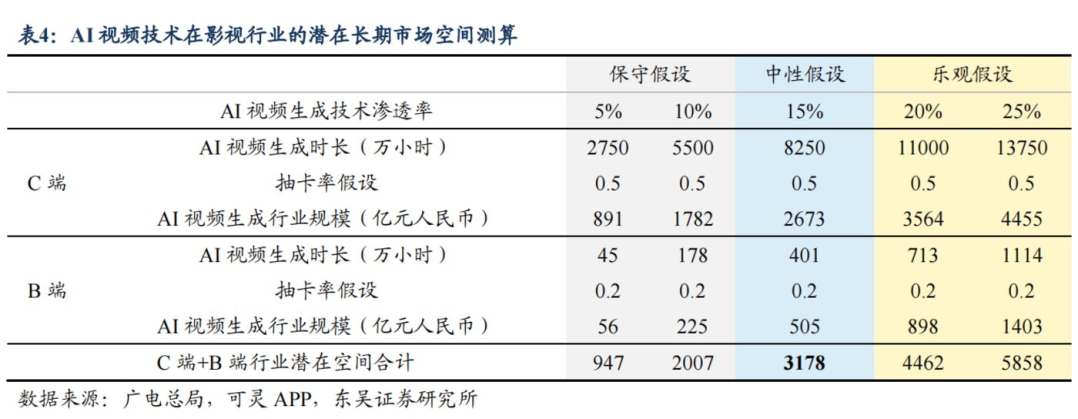"What does it have to do with destroying you?" This is a sentence used to describe the war between humans and Trisolarans in Liu Cixin's science fiction novel "The Three-Body Problem".
Nowadays, a similar “dimensionality reduction attack” is also happening in the video industry: since June, from face-changing to onomatopoeia, from fantasy to simulation, domestic and overseas AI video models such as Adobe, Kuaishou Keling, and Zhipu Qingying have ushered in The intensive release period has disrupted the traditional video industry in terms of cost.
Compared with the past, these products have exceeded expectations in terms of effect optimization, functional innovation, and application implementation. In this round of "AI video war" of large model competition, which companies are at the forefront?
The "second half" of the large model competition: Where has AI video gone?
In February this year, the much-anticipated Open AI launched the large video model sora, which triggered widespread market attention on the AI video generation track. However, to this day, Sora is still only open to a few trial users and has not been officially launched.
According to a statement from Open AI, the main reason why Sora is still in the research stage is that "the company's communication with policymakers is still ongoing." According to foreign media reports, Open AI is in contact with relevant people from YouTube, Hollywood, etc. to obtain more support. Mira Murat, chief technology officer of Open AI, said, "Before the official release, the cost of generating Sora must be reduced first, because the current cost is 'too expensive'."
Since this year, at least 10 large and innovative companies at home and abroad have released new products or model upgrades related to AI video, and most of them have been open to all users.

Source: CITIC Construction Investment Research Report
Judging from the data given in the research report above, during the period from June to October 2024, the AI video industry has mainly undergone the following three changes:
From this perspective, it is the "window period" left by Open AI due to cost considerations that allows other companies in this track to see opportunities and jump ahead.
Marx said: "The capitalist will sell the rope with which he hangs himself." In the same way, in the capital market, money will always flow where it should go. The reason why so many companies and hot money are pouring into the AI video industry is because the rapid development of AI technology is reshaping the video production industry, so there is huge market potential.
According to calculations by Soochow Securities, under the neutral assumption, the potential space for the industry generated by China's AI video is 317.8 billion yuan, of which the C-end and B-end market spaces are 267.3 billion yuan and 50.5 billion yuan respectively.

The core support for building this 100-billion-level market is that existing video production companies have the need to reduce costs and increase efficiency. This demand will continue to promote the increase in the penetration rate of AI in the field of video production, thus bringing revenue to related companies. increase.
In terms of cost reduction, taking movies as an example, according to calculations by Soochow Securities, before 2018, the production cost of each movie produced using traditional methods was approximately 23 million yuan to 170 million yuan per movie. After the addition of AI, it can not only shorten the production cycle, but also replace some personnel in the production and promotion of the movie, ultimately reducing the production cost of each movie to 25,000 yuan, a cost reduction of more than 95%.
In terms of efficiency enhancement, judging from the products that have been released so far, the technology of AI video production itself is still evolving rapidly: from the advent of video generation technology in early 23 to the release of Sora in February this year, it only took one year; this year Kuaishou Keling was released in June and has gone through 9 iterations in three months. The understanding of the model, the controllability of the generated results, and the yield rate are all improving.
In July this year, Douyin and Kuaishou launched the AI micro-short dramas "Sanxingdui: Apocalypse of the Future" and "Mountain and Sea Wonderland: Breaking Waves" respectively, taking the lead in opening up the application of AI in the field of short videos.
In September, the three major traditional video platforms "Aiyouteng" also began to increase their support for AI creation. Taking Youku as an example, it recently announced a new short drama sharing rule. The S-level unit price of exclusive short dramas has been increased from 6 yuan to 16 yuan, and the A-level unit price has been increased from 4 yuan to 8 yuan. In addition to the newness coefficient, the split income of short dramas with good data performance can also rise to up to 120%. Youku promises that 70% of the revenue will be given to the producers.
From this perspective, AI video is going through similar iterations as AI large models, and is spontaneously evolving towards lower costs, wider application range, and higher technical capabilities. When AI video tools are upgraded from "toys" to "productivity tools", they may usher in a "singularity" in user scale, which will drive the data flywheel and promote further development of the industry.
In the era of textual AI, Open AI in the United States has taken the lead among global AI companies and become the "first to try it out" by virtue of its technical advantages in underlying computing power and algorithms. Now, in the era of video AI, China's major Internet companies have obviously accelerated their pace and do not want to become "followers" again.
Previously, Byte had positioned the film clipping as a P0-level project, led by former CEO Zhang Nan to seek breakthroughs in AI-assisted creation. Zhang Nan said, "AI image generation technology will bring huge changes and possibilities to the content creation tool industry." Kuaishou positioned "Keling" as a strategic project, led by technology expert Wan Pengfei. After the project started In less than a month, it received the support of Cheng Yixiao in terms of funds, GPUs, talents, etc. In addition, companies such as Meitu and Wondershare Technology have also increased their AI video functions and launched Meitu Fantasy , Wondershare Sky Screen and other large multi-modal AI models.
The reason why they attach so much importance to the AI video project is not only to obtain revenue, but a more important consideration is to compete for traffic. After all, with the support of AI, the threshold for creation will become lower, allowing more users to transform from content consumers to content producers, thus providing a richer content supply and winning the new round of AI era. "The battle for traffic".
Moreover, compared with Open AI, domestic video and editing manufacturers naturally have more video data accumulation. According to Quest Mobile data, short video MAU reached 1 billion in June 2024, and the average monthly usage time of a single user was as long as 61 hours, significantly ahead of other channels, and it is highly concentrated in Douyin and Kuaishou head applications.
These accumulations can give Chinese manufacturers their own advantages in terms of training data, application scenarios, and user scale when developing AI video models. Among them, data is the key to training high-quality models, scenarios determine the market adaptability and commercial potential of the product, and users can provide feedback for the product to help it iterate faster.
It is precisely because of the leadership of the above three major factors that Douyin and Kuaishou have now overtaken OpenAI, taking the lead in opening the inclusive era of AI video in China, the world's largest video consumer market. Meitu and Wondershare are also accelerating their pursuit of Adobe in the field of AI video editing.
From this perspective, in the era of AI video, if you want to become an industry leader, you must not only have an in-depth accumulation of video base materials, but also have excellent AI model training capabilities, and be able to withstand the test of user application scenarios. In this "video industry revolution" caused by AI, China's video giants may take the role of leader.